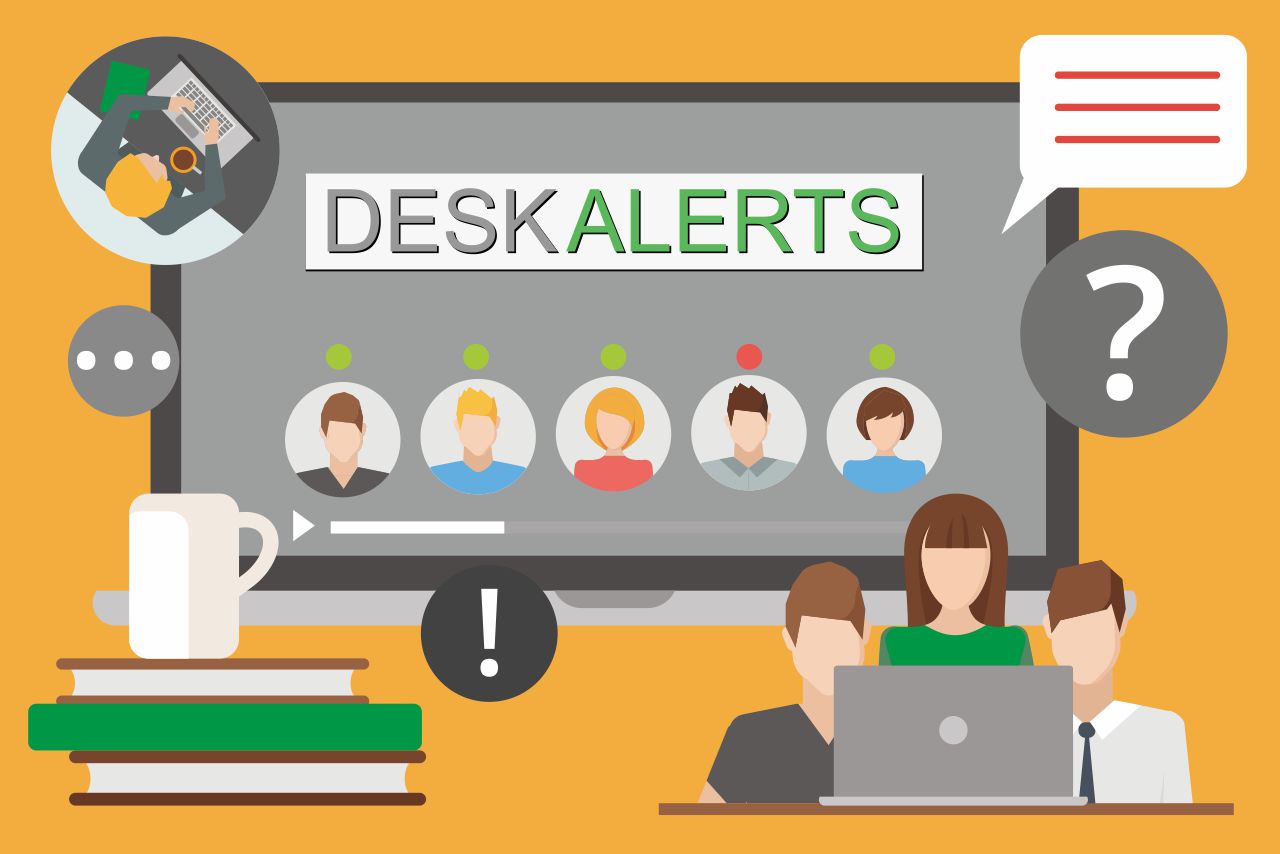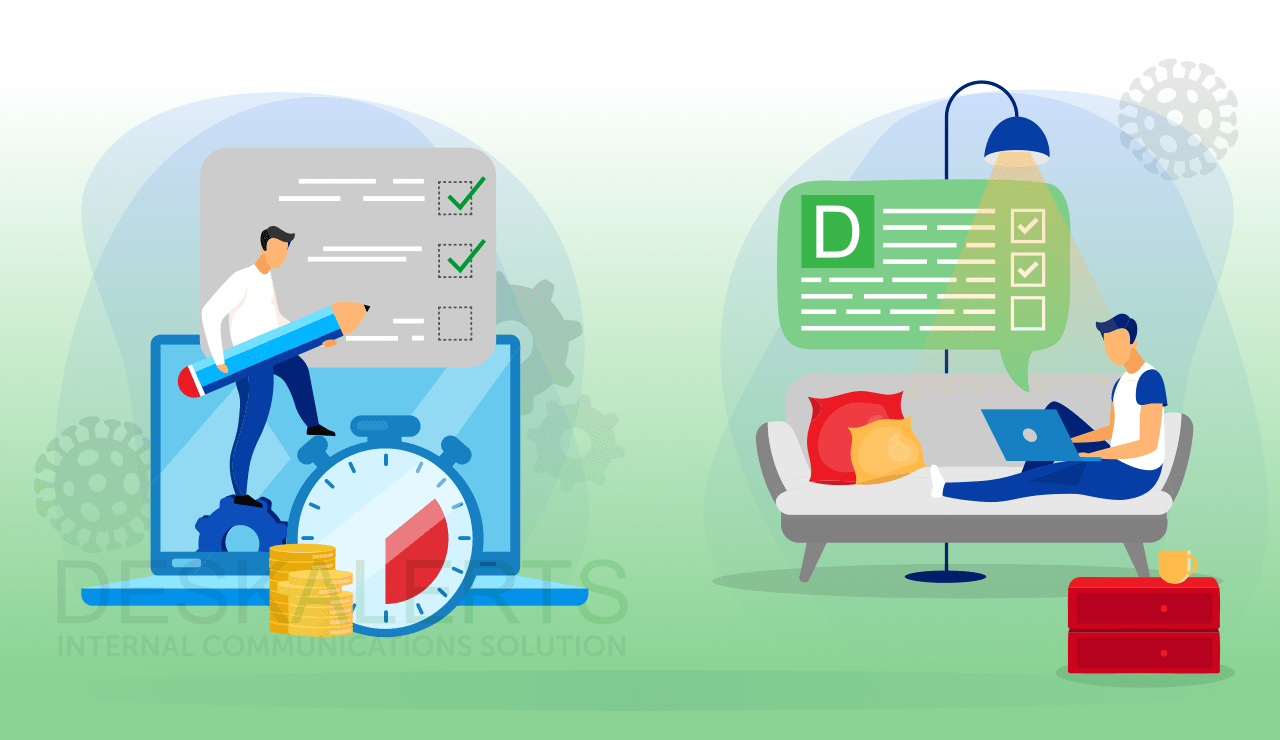
A strategic and uniform process to onboard new recruits is essential to ensure they have a good understanding of the company, its culture, goals, processes, and procedures. With more and more employees working remotely, it’s essential to have an online onboarding process in place to ensure a consistent experience no matter where the employees are located.
What is online onboarding?
The COVID-19 pandemic has accelerated the growth of remote working – while some people have been working from home for almost 18 months now who had previously worked in offices, many people have been teleworking for years with great success. It is anticipated that the pandemic will shake up the way we work forever – with flexible working arrangements including remote work set to play a big part in corporate life from now on.
But new people still join organizations, even when they have to start their new jobs remotely. So it is especially important that new hires in these circumstances are given a meaningful, useful and thorough onboarding… after all, they won’t have anyone sitting next to them every day to ask questions.
Failure to onboard your employees properly can be costly.
Research by recruitment firm Robert Half found that almost 60% of managers have had an employee quit during their probation period due to poor onboarding.
Recruitment is costly. So if you have this type of high turnover, it will add up – not to mention the effect on productivity when people don’t know how to do their jobs properly and make mistakes.
To get started, download our free online onboarding checklist!

How to successfully run an online employee onboarding program
There are many advantages to having an online onboarding program. Not only can you onboard new recruits more quickly, but it will ensure that every new recruit in your organization has a consistent onboarding experience.
1. Start with a plan
Whether you’re new to having an onboarding process of any description or your organization has previously done them in the office, it’s important to have a plan of attack. For those who have previously had an onboarding process, this is a good opportunity to take stock and determine if the program has been a success or if there are things you could change and do better when you deliver it online.
Read more: Onboarding ideas during COVID.
For organizations starting with onboarding for the first time, set out a list of your goals and the outcomes you would like to see. How will you deliver that to employees? When will you deliver it? How will you be able to measure success?
2. Ensure the content you deliver is engaging
Suppose you fail to capture your new recruits’ attention because the information you’re presenting them with is boring, stale, difficult to understand or just too long. In that case, you’re not likely to get them to retain the information. Try engaging video content, interactive quizzes and other tools that will keep peoples’ attention. Get rid of any content that doesn’t really achieve the goals you set out at step one.
3. Talk about your corporate culture
It’s really important that new recruits get a good feel for your organization’s company culture and core values – especially if they aren’t going to be in the physical office environment to experience it the way many of your other employees will have experienced it. They need to understand your company’s vision and mission and how their role will contribute to the company’s success.
4. Make sure your new start has all the tools they need
As many of us can probably relate, it’s horrible to start a new job when they haven’t yet provided you with a desk, computer, phone or other essential tools you need to start work. It’s even more frustrating for remote hires because the tools and equipment they need are the very things that keep them connected to their new organization.
Before your new hire commences, make sure they have all the IT hardware and software they need, including any software programs that are necessary for the onboarding experience.
Also, ensure they are added to all the relevant communication channels, such as DeskAlerts, so that they never miss important information.
5. Commit to onboarding being an ongoing process
Onboarding shouldn’t just be a one-hour induction into the company: it is a process that can be rolled out over many months when the new hire is still fresh with the organization. Create a schedule of different types of onboarding content relevant to the employee and their role.
For example:
- welcome on day one,
- an introduction to all systems and processes in week one,
- an introduction to other parts of the organization in week two, etc.
6. Use different online platforms to keep your recruit engaged
Whatever platforms your team uses to communicate and share information on a day-to-day basis can be used to keep your new employee engaged. Organize group chats with the immediate work team, have one-on-one check-ins between the new hire and their manager regularly and encourage them to ask questions of their colleagues and managers using chat or messenger functions.
7. Encourage your new hires to network
Pairing your new hire up with a “buddy” is a good way to get them used to life at the company and they will have a go-to person to email, message or have video chats with who can help them out as they find their feet.
You can also establish a network of new hires so they can get to know other people who are in the same boat as them and forge good working relationships.
8. Send reminders to your new recruits
A good way to remind new recruits about key information, processes, procedures, key dates etc. is to send them messages at an appropriate time, reminding them of the information they have been previously supplied during onboarding.
You can make a custom audience to send all new recruits specific information, such as via a pop-up alert, or you can tailor customized, personalized information to individual recruits.
9. Foster a sense of belonging
In the physical office environment, team members often make new recruits feel welcome by popping by their desk for a chat, eating lunch with them in the break room, or going for a coffee together.
You can still achieve these types of peer-to-peer engagement exercises online! Encourage team members to forge a sense of belonging with their new colleagues outside of team meetings and projects by scheduling coffee catch-ups, eating lunch together virtually, or having a chat during the day.
10. Provide job-specific training
Sometimes you may recruit several people to do a similar role, and other times you may have specialists in your organization with their own unique jobs. By creating job-specific training modules, you can be sure that you have shown your new recruits exactly what you need them to do in their new roles. You can send video training content via pop-ups straight to the employee who needs to see it. You can also test their knowledge by sending quizzes.
11. Have an online organizational chart
Often on the first day of work, a new hire will be taken around the office and introduced to everyone. Then they have to try to remember all the new names – while the existing employees just have to remember one. This is even tougher when new recruits start with the organization remotely. Creating an organizational chart that is easy to access and clearly identifies who everyone is and what their role is can help your new recruits navigate “who’s who.”
12. Add gamification to the onboarding process
Adding an element of gamification can make the onboarding process more enjoyable and engaging for the new recruit. For example, you could run an online scavenger hunt where they have to find various pieces of information on your intranet and/or internet sites. Ideally, this is something you could test them with after a few weeks. You can also send quizzes for them to complete.
13. Keep checking in with them
Don’t forget about your new hire after the first few weeks – keep checking in with them and schedule regular one-to-one chats to ensure they feel included and that they have all the tools and resources they need.
14. Get feedback
Throughout the onboarding process, you can get feedback from employees on a range of things: from how they feel about the onboarding process overall to what specific information they feel they should have received but didn’t. You can send surveys to your new recruits to gather this data.
***
Online onboarding will help your new employees feel as though they are part of the team, even though they are working remotely and may not have met their colleagues face-to-face.
 Caroline Duncan
Caroline Duncan








